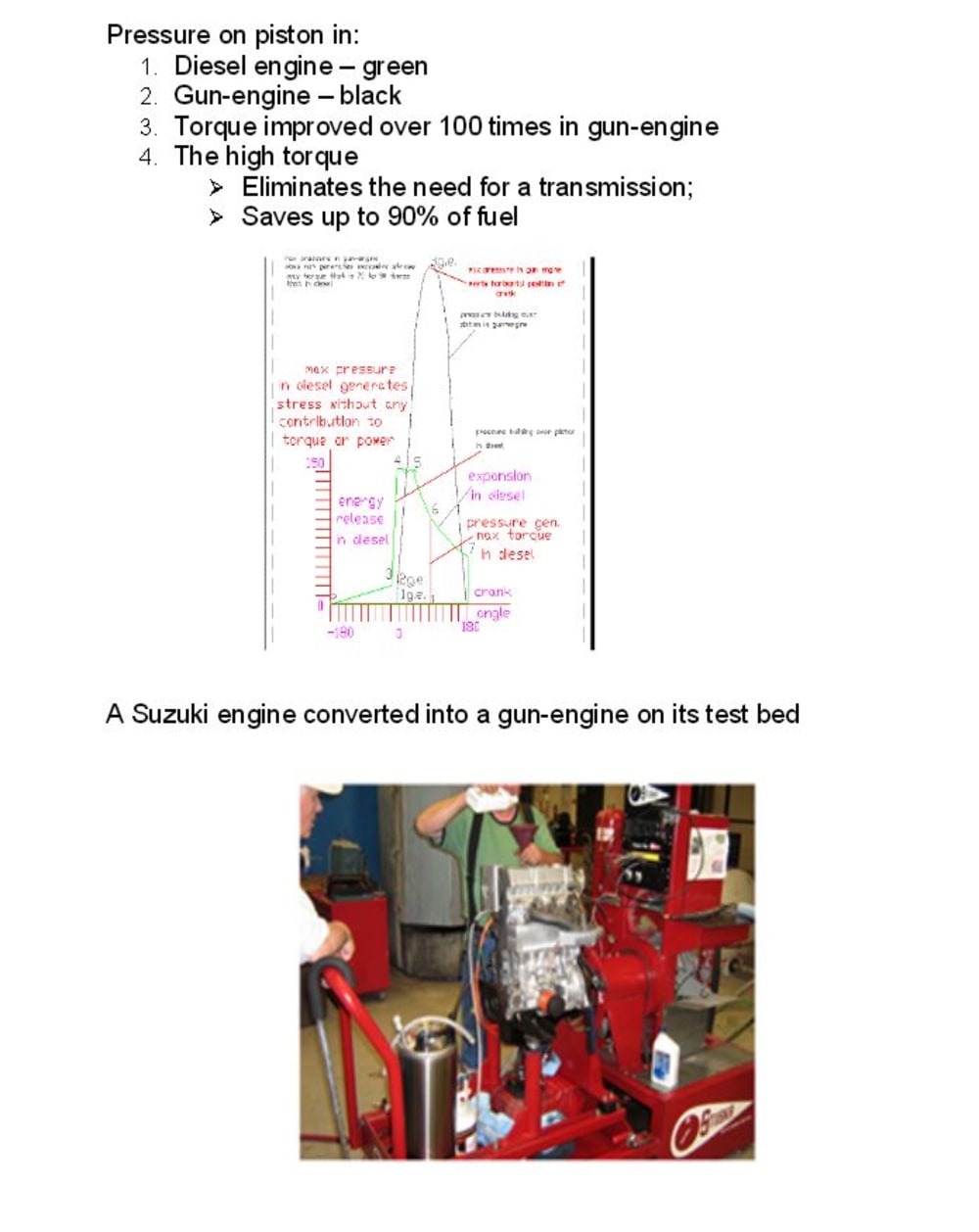Abstract and Advantages
The innovative aspect of this gun-engine (patent pending) combines the technology of a gun and a traditional engine.
The barrel of a gun augments the cylinder of a traditional engine. The piston of the engine blocks that barrel. An additional piston floating on an air cushion over the piston replaces the bullet. An explosive mixture of vaporized or gaseous fuels and air replaces gunpowder.
Detonation moves the additional piston. This movement transfers energy from the exhaust into the air cushion, which is squeezed. The air cushion retains the energy of the expanding exhausts, which pushes onto the piston. There is maximum pressure exerted on the piston when the crank is horizontal. Torque is increased by two orders over that of a traditional engine. This increase in torque cuts potentially up to 99% of fuel consumption.
The complete squeeze of the air cushion stops the additional piston, which bounces, re-compressing the expanded exhaust. A complete re-compression occurs when the piston is at TDC; the exhaust expands again producing a second power stroke in the cycle. These processes of re-compression / reexpansion continue until the exhaust cools. Then that cool exhaust is released and the next cycle commences. The exhaust also cools the engine internally, eliminating the need for a radiator.
The exhaust expands more than in a traditional engine because it expands in the volume displaced by piston’s stroke augmented by the volume of the air cushion.
The exhaust expands below atmospheric pressure; consequently, more heat can be converted into work than can occur in traditional engines. There is no advance of the ignition: high torque is retained from start to maximum speed, eliminating the need for a transmission.
As to its marketability, the gun-engine will appeal because it reduces fuel consumption by up to 95%. (A mathematical model shows fuel consumption reduced by 95%. However as was observed in a converted 1 liter Suzuki, fuel consumption was reduced by only 90%.)
Green house gas emissions are reduced in the same proportion. This engine can operate on any vaporized or gaseous fuel. By design, there is no emission of toxins or black particulate.
Regarding manufacturability, the gun-engine can be produced easily with little modification on existing production lines. For example, it took two weeks to convert a Suzuki 1 Liter engine (shown in photo) into a gun-engine. Or, mould injection plastics technology can be used to produce the gun-engine.
With regard to savings, this engine will reduce fuel consumption by 90 to 95%. Because it is simpler to produce (having no cooling system i.e. radiator or transmission) it is less expensive to produce than today’s engines. Because it takes fewer raw materials to produce, it is cheaper generally. Using mould injection plastic technology to produce the engine is much less expensive than using metals.
This engine can be used in vehicles, ships, prop planes, helicopters, electrical generators, and industrial processes. In all, the gun-engine is efficient and economically viable, and meets legislated and environmental requirements.
Like this entry?
-
About the Entrant
- Name:Glenys And Stanislaw Galloway And Holubowicz
- Type of entry:teamTeam members:Glenys Galloway
Stanislaw Holubowicz - Software used for this entry:PDF and AutoCAD
- Patent status:patented

